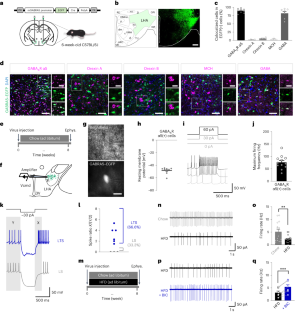2023-08-29 ワシントン大学セントルイス校
A wave of electrical activity passes over the visual area of the brain of a marsupial joey. Studying marsupials, whose brains develop largely after birth, researchers at Washington University School of Medicine in St. Louis identified some of the earliest events in brain development. The findings lay the groundwork for understanding the roots of brain conditions such as epilepsy, autism and intellectual disability. (Video courtesy of Linda Richards)
◆この問題に取り組むため、13日間の妊娠期間で生まれるフトアシクスナギツネのような有袋類であるファットテイルドダナートを使って研究しました。ダナートの赤ちゃんの脳の発達を母親のポーチで観察することで、脳の外側の表面である大脳皮質がどのように組織化されるかについての洞察が得られました。脳構造が通常どのように形成されるかを理解することは、なぜプロセスが時折誤って進行し、神経学的障害が発生する原因や方法についての重要な手がかりを提供する可能性があります。
<関連情報>
- https://source.wustl.edu/2023/08/how-do-developing-brains-assemble-and-organize-themselves/
- https://www.pnas.org/doi/10.1073/pnas.2208654120
脳の発達初期に皮質活動が領域特異的パターンで現れる Cortical activity emerges in region-specific patterns during early brain development
Rodrigo Suárez, Tobias Bluett, Michael H. McCullough, Lilach Avitan, Dylan A. Black, Annalisa Paolino, Laura R. Fenlon, Geoffrey J. Goodhill, and Linda J. Richards
Proceedings of the National Academy of Sciences Published:May 22, 2023
DOI:https://doi.org/10.1073/pnas.2208654120
Significance
Region-specific patterns of neural activity are present at birth in rodents and are thought to refine synaptic connections during critical periods of cerebral cortex development. Marsupials are born much more immature than rodents, allowing the investigation of how these patterns arise in vivo. We discovered that cortical activity patterns are remarkably similar in marsupial dunnarts and rodents, and that they emerge very early, before cortical neurogenesis is complete. Moreover, these patterns arise from the outset with different spatial and temporal properties specific to somatosensory and visual areas (i.e., patchworks and waves) indicating they may also play evolutionarily conserved roles in cortical regionalization during development.
Abstract
The development of precise neural circuits in the brain requires spontaneous patterns of neural activity prior to functional maturation. In the rodent cerebral cortex, patchwork and wave patterns of activity develop in somatosensory and visual regions, respectively, and are present at birth. However, whether such activity patterns occur in noneutherian mammals, as well as when and how they arise during development, remain open questions relevant for understanding brain formation in health and disease. Since the onset of patterned cortical activity is challenging to study prenatally in eutherians, here we offer an approach in a minimally invasive manner using marsupial dunnarts, whose cortex forms postnatally. We discovered similar patchwork and travelling waves in the dunnart somatosensory and visual cortices at stage 27 (equivalent to newborn mice) and examined earlier stages of development to determine the onset of these patterns and how they first emerge. We observed that these patterns of activity emerge in a region-specific and sequential manner, becoming evident as early as stage 24 in somatosensory and stage 25 in visual cortices (equivalent to embryonic day 16 and 17, respectively, in mice), as cortical layers establish and thalamic axons innervate the cortex. In addition to sculpting synaptic connections of existing circuits, evolutionarily conserved patterns of neural activity could therefore help regulate other early events in cortical development.



